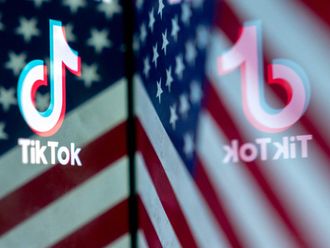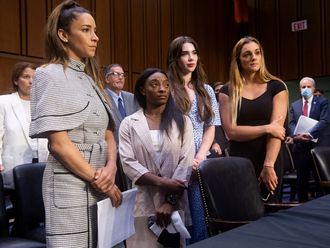
In 30 years, America will look very different than it does now. According to analysis of census data, by 2043 white Americans will no longer be a majority. But an equally significant population milestone will arrive in 2020. That is the year in which the next census takes place, and it will be the first one tasked with successfully chronicling the most racially and culturally mixed population in American history.
Governing the nation at the very time the census is grappling with this issue is the country’s first biracial president. Though President Barack Obama has said he identifies as black on the census, there is a growing population of people who may share a similar background but do not wish to identify as he has chosen to. Helping to ensure that these Americans are adequately and accurately counted through his administration’s efforts to perfect a modern census could end up being a significant part of the Obama legacy.
Multiracial Americans are the fastest-growing demographic in the country, yet the United States Census Bureau has struggled with how to effectively capture the changing racial make-up of America. In his new book “What Is Your Race: The Census and Our Flawed Efforts to Classify Americans”, Kenneth Prewitt takes the census to task for its many shortcomings when it comes to painting an accurate portrait of America’s racial and cultural landscape. Prewitt, though, is not just any run-of-the-mill critic. He is a former director of the US Census Bureau, where he served from 1998 to 2001.
Prewitt says that America is unique in its racial categorisation and its reasons for categorising. “We decided why we wanted racial statistics and the purpose of them, and then designed statistics to accomplish those purposes.”
So, for instance, when a compromise was needed to appease Southerners to get the House of Representatives up and running in the late 18th century, black slaves were counted as three fifths of a person. Then by the mid-20th century, as the civil rights movement became enshrined in legislative policies such as affirmative action, collecting accurate racial data became a key tool in the quest for social justice.
There is a passionate debate raging over whether a wealthy, first-generation African immigrant is the intended beneficiary of American affirmative-action programmes. This kind of debate is the crux of Prewitt’s argument.
In 1790, the first census was taken, and by the close of that century would attempt to categorise Americans based on five colour divisions: white, black, red, yellow and brown. Those categories form the foundation for what are still the primary census racial classifications of white, black/African-American, American Indian and Asian, with categories such as Native Alaskan and Native Hawaiian being relatively recent additions.
The 2000 Census would mark the first time individuals were permitted to check more than one racial classification. (Fascinatingly, according to Prewitt’s book, conservative Republican Newt Gingrich pushed the issue, inspired by the parent of a biracial child in his district.) But Prewitt makes a compelling case that it is still falling short.
“Nobody else uses these five categories as their management system for race and ethnicity.” When asked if that is because other places have less diversity or are simply better at categorisation, he replied, “I think it’s because they are not as deeply racist as we are. I’m serious. This racial categorisation and conversation got a hold of us back in the slavery days, and we have repeated it and repeated it.”
He went on to explain that today there are essentially three reasons racial statistics are collected. “One is the continuing legacy of discrimination,” which can be addressed through a “racial-justice agenda” (such as affirmative action), he said. “We are not going to be a colour-blind society,” so statistics are necessary to prove who is and who is not discriminating.
The second reason is the “melting-pot challenge”, the ability to track how many immigrants we have and how they are adjusting to American life, and third, identity politics. A lot of people of colour want to be able to strongly identify with their communities, which is tough to do on a national level without accurate data identifying where these communities are and who comprises them.
According to Prewitt, at the moment the census “is moderately good at the racial-justice agenda, is woefully inadequate on the immigration-assimilation issue and has kind of mixed up the whole identity stuff. All kinds of subgroups don’t find themselves.”
But not only do subgroups not find themselves, as Prewitt’s book argues, today determining what box someone fits into tells you very little about their experience as Americans.
Asked if he considers the race questions now on the census inherently racist, he replied, “Yes. I think they really are. The very fact that we use them this way.”
He then attempted to illustrate his point via a controversial anecdote. “If you walk some of the city streets at night in New York, you worry if you see four or five black teenagers with hoods on. Now, is that stereotyping? I don’t think that’s stereotyping if you’re in a high-crime neighbourhood. But that [worry] is not because they’re black — I don’t think. It’s because they live a certain kind of impoverished [life], lack of education, lack of access, lack of mobility, and I want to attack that problem.”
Prewitt’s book explores this very issue by pondering whether asking questions about education and health status would tell us more about a population than traits such as skin colour lumped under one racial category. From Prewitt’s vantage point, a census that only tells you generally about those teens’ skin colour won’t really help in attacking the core problems. If one of the functions of census data is to use population information to effectively craft policy to address issues affecting specific communities, then it is failing.
To its credit, the Census Bureau has already begun exploring ways to improve its present form. In 2010, there were experimental questions included on the document that allowed people to elaborate on their ethnic origin. For instance, instead of simply identifying as “Asian” there was the option of selecting “Japanese”, “Korean” and other specific subgroups.
In 2012, former Census Bureau director Robert Groves said of the experimental questions, “As new immigrant groups came to this country decade after decade, how we measure ethnicity changed to reflect the changing composition of the country. Since that change is never-ending, and America gets more and more diverse, how we understand and tabulate the information has to be continually open to change. It’s critical that race and ethnicity reflect how people identify themselves.”
To Groves’s point, it was not until this year that the census decided to drop the word “Negro”, which has not been widely used in American society for decades.
In a statement regarding Prewitt’s general criticism that the present census is falling short, Nicholas Jones, chief of the US Census Bureau’s Racial Statistics Branch in the Population Division, said, “The US Census Bureau remains committed to improving the accuracy and reliability of all census data by expanding our understanding of how people identify themselves and by eliciting detailed responses on race and ethnicity.
“For decades, the Census Bureau has provided research data on how Americans identify their race and ethnicity, and research from its 2010 Census Alternative Questionnaire Experiment (AQE) is informing the decision-making on this issue. As the Census Bureau prepares for the 2020 Census, we will explore how the successful strategies from the 2010 AQE may be further tested to provide accurate and relevant data about our changing and diversifying nation.”
When asked how he would like to see the census changed, Prewitt mentioned a colleague’s suggestion to ask, “Are you discriminated against, and if so, on what basis?” but he quickly added, “That’s not going to happen.” He then offered, “I just wish the question were ‘What population group do you belong to?’ instead of ‘What race do you belong to?’ Then I’d list African-American, Hispanic, European, American Indian. I’d just list them, and you can be more than one, two or three of those things. Media will still call it race. I just don’t want the government to be in the game of acting as if these race categories are real.”
He said he is not sure how much of an immediate impact such a language change would make, but that it would “turn the temperature down a little bit”, in how we discuss race and racial identity in a country with a troubled history of racism.
He also explained that ultimately the culture will force the long-term change that people such as him would like to see. In 30 years or so a population of multiracial, multi-ethnic Americans will completely alter how we talk about and think about race, meaning the census will have no choice but to shift.
–Washington Post












